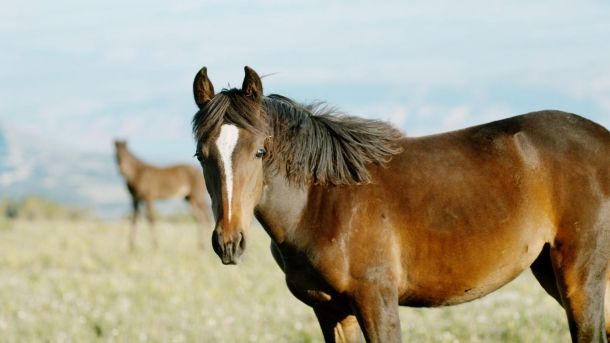After each NATURE premiere, we gather online videos we love into a playlist and round up resources for parents and teachers. From our newest film to incredible footage from around the web, here were our favorites. And don’t forget, you can always subscribe to our newsletter so you don’t miss a thing!
In Case You Missed It:
Watch “American Horses” HERE

American horses are icons. Mustang. Appaloosa. Morgan. Quarter Horse. Follow the history of the uniquely American horse breeds that helped shape our nation and meet the people who are continuing in the long tradition of caring for them. Watch HERE.
Our Favorite Moments From the Film:
Wild Stallions Fight to Mate
At the height of breeding season, a band stallion fends off bachelor stallions.
How Appaloosa Keep Nez Perce Traditions Alive
For the Nez Perce tribe, gathering with the Appaloosa herd is an opportunity to honor something timeless.
Why The Quarter Horse is Built for Speed
The American Quarter Horse has been clocked at 55 mph.
More Good Nature:
Soothing Nature: Wild Mustangs
Run free with these wild mustangs!
For Kids:
Wild Pony Creature Powers | WILD KRATTS
Aviva can’t get the Wild Pony creature discs back to the teleporter on the Tortuga but Jimmy can, controlling the Guinea Fowl Flapper to transport the discs to the bros. Jimmy makes the drop off but Chris’ disc breaks, leaving only Martin to activate his wild pony creature powers.
From Around the Web:
How Horses Went From Food to Friends
Do our modern horses descend from just one domesticated population, or did it happen many times, in many places? Answering these questions has been tricky, as we’ve needed to bring together evidence from art, archaeology, and ancient DNA…Because, as it turns out, the history of humans and horses has been a pretty wild ride.
How Horses Took Over North America (Twice)
The ancestors of modern horses became so successful that they spread all over the world, to Europe, Asia, South America, and Africa. But in their native range of North America, they’ll vanish for 10,000 years. Until another strange mammal brings them back.
